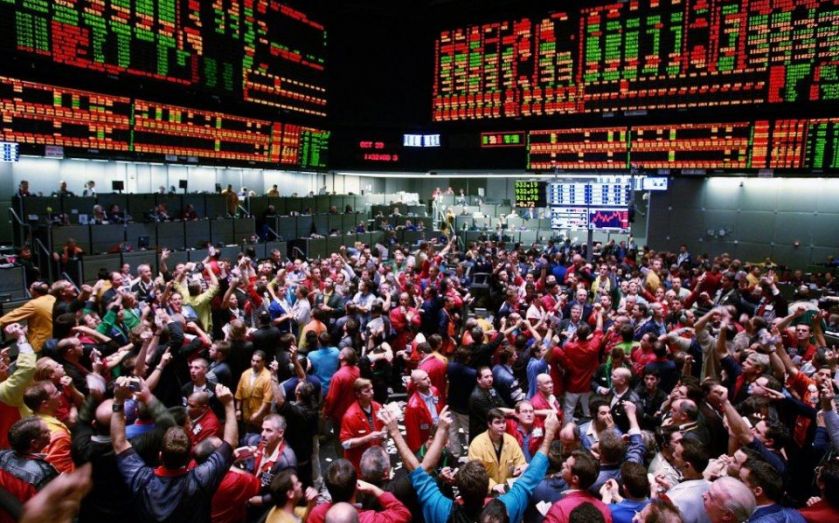
CNBC Guest Post: The Risks of Killing the CME Pits
If you ask anyone who ever set foot on the floor of the New York Mercantile Exchange, they’ll tell you it was a place unlike any other. The screaming and yelling, the energy, the epic fights and the epic friendships. While we all competed against each other on a daily basis, we also had each other’s backs. Fortunes were made one day and lost the next, then made again. When the opening bell rang, it was like being in the Super Bowl every day.
I began as a runner on the CME Group floor in 1986. I was fresh out of Syracuse University and making $3.75 an hour. The education and experience was life-changing. When I moved back to New York, I traded gold and then crude oil in NYMEX’s crude oil pit. It was just after the Gulf War and oil was going crazy. So was the floor. Arms were swinging, bodies were flying and adrenaline was raging. I’d never seen anything like it and probably never will.
While the CME Group announcement that they will be closing the pits July is hard for all of us to take, it’s only the final of many nails in the coffin that began in 2006. That was when the NYMEX board voted to allow electronically-traded physically-settled energy contracts to be traded side by side with the open-cry pit markets. Previously, NYMEX ACCESS offered electronic trading but it was only available after-hours. Before this, the only time the electronic market was open during the day was a few days after the Sept. 11 attacks – NYMEX needed to settle the markets before the weekend.
I voted against electronic trading for a variety of reasons, including my concern that the market conditions were moving faster than the learning curve of the Commodity Futures Trading Commission and the regulators, who didn’t understand the new markets they were trying to enforce.
I remember when someone on the board said it would help the floor by making the WTI floor and WTI electronic contracts fungible, I laughed and replied that this would kill the floor within six months. Sadly, I was correct. It happened in the first 18 months.
After NYMEX placed their contracts online, seat leases dropped rapidly from $25,000 to $1,000 a month. Everyone knew their time on the floor was now finite. CME’s news about closing the floor isn’t surprising to anyone and will only affect a handful of people. The decision to launch electronic trading in 2006 and 2007 had life-changing consequences for thousands of people, but many have since moved on.
So who has taken the place of the floor market makers?
High Frequency Trading (HFT) trading stepped in. While there has been extremely bad press about the HFT traders (I was one of the biggest haters of the people who took my place), even I have to acknowledge that without them, there wouldn’t be a market or liquidity to trade off of.
If you slow down HFT to a snail’s pace, you’d find they do exactly what the floor traders did. The floor traders fought for location, the best traders were often the fastest and we all took advantage of the markets in efficiency. It’s pretty much the same for HFT.
Most people aren’t aware how traders got their spots in the pit and just how valuable their position was. There were crucial advantages in standing on the top steps, standing next to certain brokers, having phones lines closer to the pit and seeing the TV’s on the floor. It was all about having information and order flow, which is what allows today’s top HFT to succeed.
The closing of the gold and crude oil pits could worsen the issue of painting the tape (manipulating prices by both buying and selling) by large trading houses to help their positions or hurt traders that can’t bully the market. This has happened and will be a major issue for the settlement of back months. The front month is a weighted average and shouldn’t be affected.
The open access that has been given to funds that never traded energy or only traded as financial instruments has caused harm to the public on a supply and demand basis.
When the floor was open, access was limited, and used for hedging more then speculative trading. This latest massive selloff in energy proves the point that speculation is alive and well, and controlling the market. The world’s supply and demand didn’t change that drastically for a contract in crude when the front month came off over 40% in six weeks. This massive speculation is enabled by the ease of access to funds into the electronic market.
The days of trying to get across the floor and through the phone wires by doing limbo poses, of being so tight in the pit that I had to throw my trading sheets over my head behind me for my clerk to figure out my position and have him try to stick his arm back in the pit to give it to me, feeling the rush and power of being a floor trader – these days are long gone.
Long gone but not forgotten. Even when all we hear now are the clicks of the keyboard and funky sounds announcing a trade has gone off, we can always look back and remembers how great is was. And if you ask any of us if we missed it, we’d reply “EVERY DAY!!”
Stay informed – sign up for our e-Newsletter.



